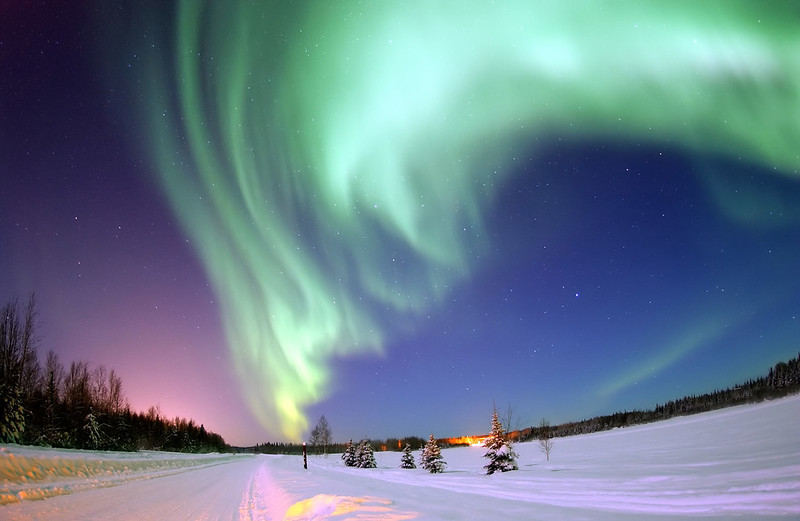Eyes are opening to the evil of the authoritarian Chinese regime that represses its people, genocides entire cultures, and influences investments and policy all over the globe. As most of the world is under coronavirus lockdown, the Chinese Communist party detains hundreds of thousands (if not millions) of Uighur Muslims in concentration camps in east China. Not to mention the brutal occupation of Tibet, where China is also allegedly responsible for the massacre of hundreds of thousands of Tibetans over the last 70 years due to its brutal occupation.
The CCP’s mishandling of the viral contagion from Wuhan may have exposed its obsession with power at all costs, but its next, greater threat is still developing in the shadows: imperialism. Nowhere is this more apparent than in the High North.
Beijing sits 1,844 miles away from the Arctic Circle, but that hasn’t stopped it from playing a larger role over the past few years there than some Arctic nations, including the United States.
China’s interest in the Arctic consists of three main objectives:
-
Access to rare earth minerals to power their manufacturing industry and military
-
Control of global shipping routes to create a Polar Silk Road, tightening China’s influence on the region through trade
-
Absolute military supremacy in another region of the globe to advance China’s mission of becoming the world’s next superpower
And they are moving closer than ever to meeting these aspirations. The Chinese government is embarking on a charm offensive a long way from home, flying in a mayor from a small Norwegian town with a large shipping port and offering to build a railroad to connect his town with China, bidding on commercial airports in Greenland in exchange for access to local jobs and rare earth minerals, and directing Chinese investors to invest heavily in Iceland, where Chinese contributions come close to 10 percent of their GDP.
China’s dream scenario in the Arctic is a system where Beijing can use its leverage in trade, high-interest loans, and international diplomacy to get whatever it wants, whenever. This is a massive threat not only to the United States, but to a free and fair environment in the Arctic.
So, what can the United States do to extinguish China’s burgeoning influence in the Arctic region? As of right now, not much.
Despite having hundreds of thousands of square miles of territory in the Arctic, the United States government has only one currently-functioning icebreaker to China’s four. Icebreakers, ships with a specially-curved hull and ballast tanks to break a path through up to 25-foot-thick ice, allow commercial and military vessels to travel unimpeded in the most unmapped oceanic region on Earth. Icebreakers are vital to our national defense. They allow for the transport of goods to military bases and weather stations throughout the year, monitoring our maritime border in harsh conditions, and rescuing stranded ships with critical payloads. The US Coast Guard, which is frequently charged with defending American interests in the Arctic, faces budget reductions year after year that forces leadership to make tough decisions about where to cut spending, including on icebreakers.
It’s not only physical investments, like icebreakers and specially-trained personnel, that are lacking. We’ve also neglected our investment in relationships with international stakeholders.
Our diplomatic influence in the Arctic is depleted. The White House’s missteps in attempting to buy Greenland, our perceived lack of action on climate change (despite having one of the largest reductions in CO2 emissions in the world), and the president’s continued threats to pull out of Nato have given our traditional allies some pause about supporting American initiatives in the Arctic.
Many US allies are investing heavily in their domestic security in the Arctic, forging a path ahead without the United States by their sides. The Norwegian prime minister, Erna Solberg, presented a new, long-term plan last week to combat China’s rapid investment into the Arctic region. In no uncertain terms, Solberg condemned the very core ideologies of the Communist nation, saying, ‘These are countries where the authorities do not see the value of neither democracy, rule of law, nor the fact that people have undisputed rights.’ According to the Barents Observer, Norway’s national defense plan mentioned China 52 times.
But it’s simply not possible for nations the size of Norway to take on the rising threat of the CCP in the Arctic alone. They, and other small, Arctic powers like them, need the backing of a moral and free economic powerhouse. The United States should fill this role to both protect its own interests and pull back China’s influence in the region.
***
Get three months’ free access to The Spectator USA website —
then just $3.99/month. Subscribe here
***
There is a clear path forward if the United States wishes to be taken seriously as a major player in the Arctic region:
-
Repair our relationships in the Arctic. Instead of attempting to buy Greenland, we should make up with the autonomous territory by collaborating on science, defense, and trade
-
Invest in several infrastructure and defense projects in the American Arctic in Alaska. We have left the 50th state woefully undefended, at times hiring Russian military icebreakers to deliver supplies to American cities, and refusing to invest in deep-water ports capable of taking in large Navy and Coast Guard vessels
-
Provide for joint operating systems and programs that would strengthen the defense ties between the United States and her allies.
Additionally, we should drastically lower the barriers to trade with our close allies in the Arctic on goods that have no equivalent production in the United States. We also urge the US government to ease immigration restrictions for citizens of Arctic ally countries that spurn dangerous Chinese investment projects like 5G infrastructure, commercial airports, and deep-water ports.
Now that our leaders know the danger China poses to global security, it’s time to crush imperialist China’s advances in the Arctic — and across the globe.
Nick Solheim is the founder of the Wallace Institute for Arctic Security, an advocacy group dedicated to ensuring a free and fair Arctic for future generations.

























